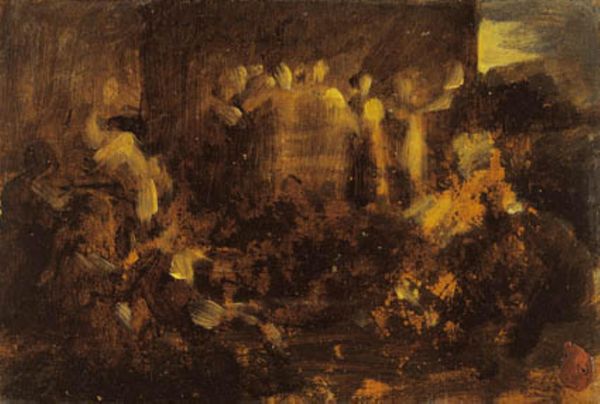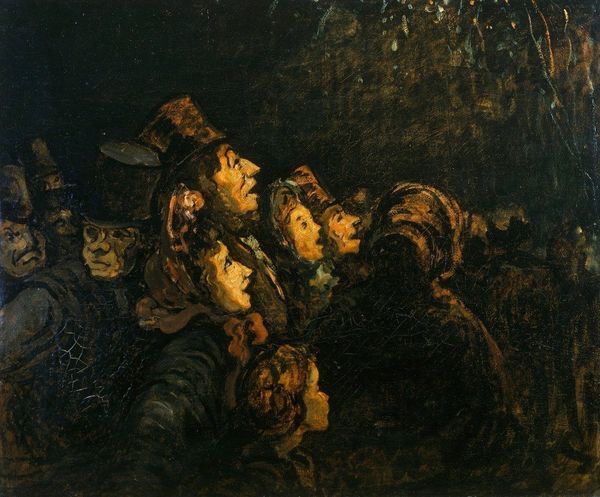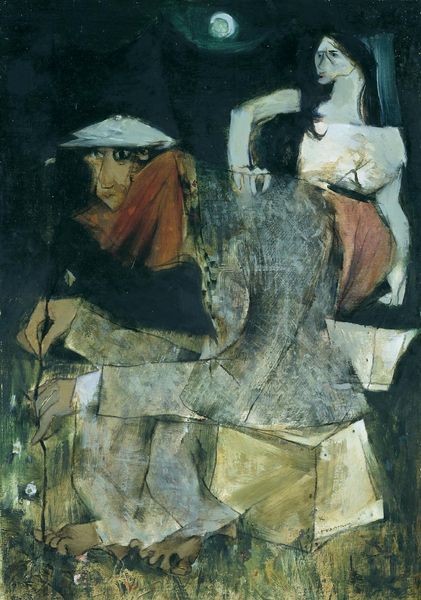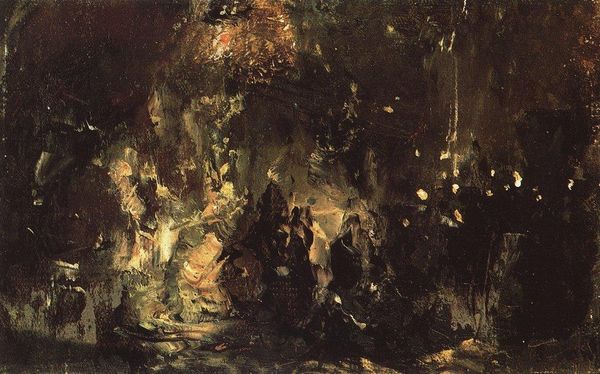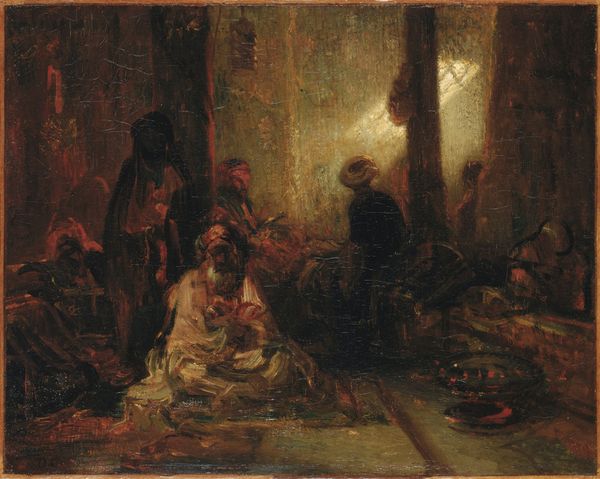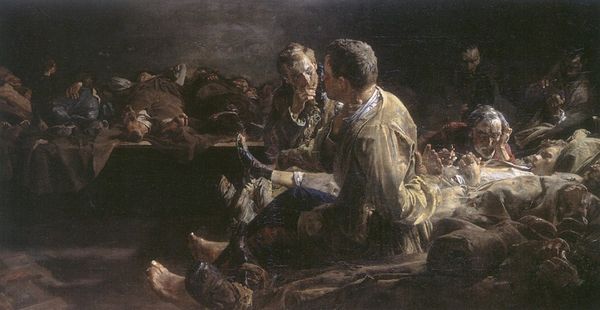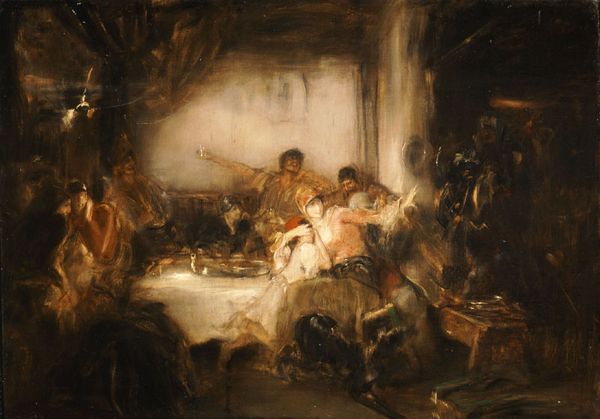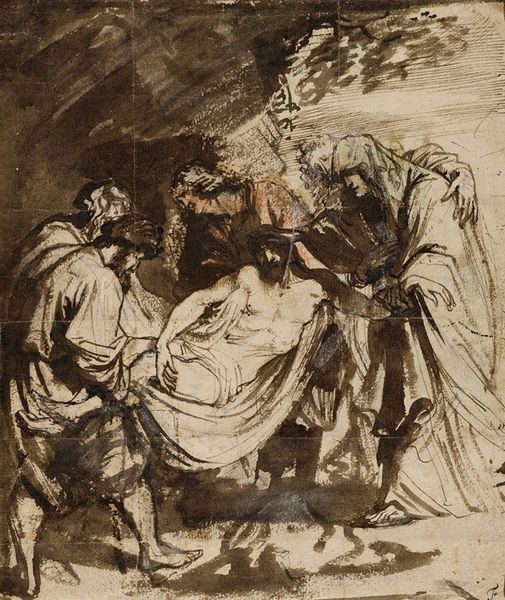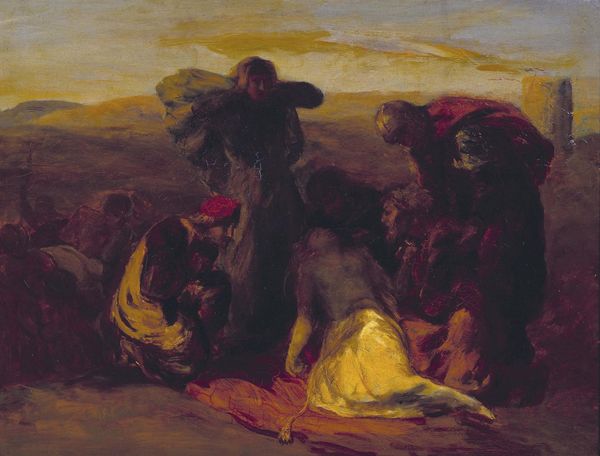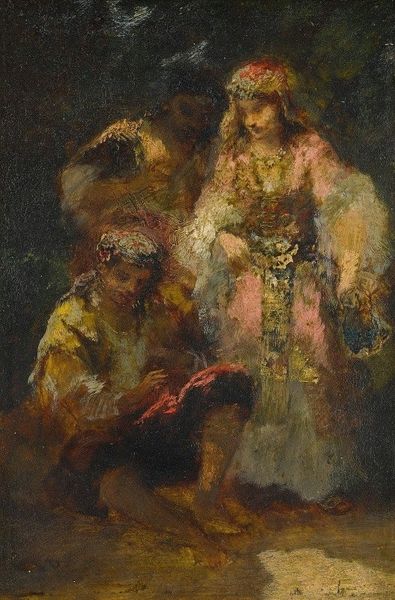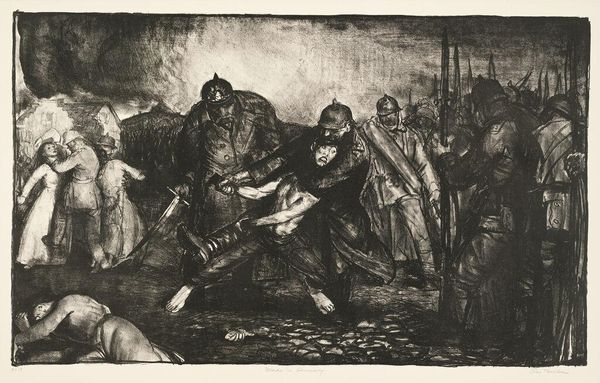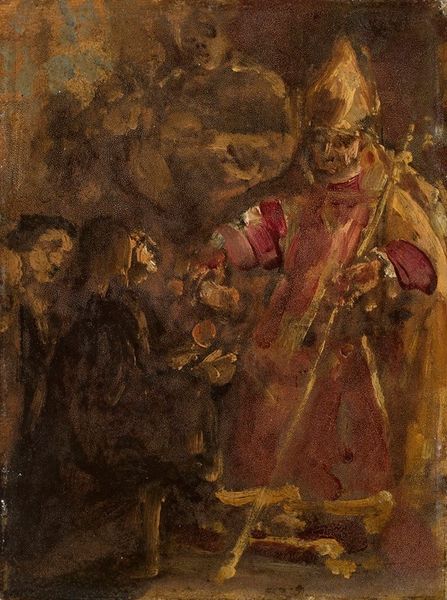
#
abstract expressionism
#
acrylic
#
abstract painting
#
possibly oil pastel
#
oil painting
#
jesus-christ
#
fluid art
#
neo expressionist
#
acrylic on canvas
#
underpainting
#
christianity
#
expressionist
#
christ
Dimensions: 40 x 23 cm
Copyright: Public domain
Curator: Francisco de Goya painted "The Arrest of Christ" in 1798. It's currently located in the Toledo Cathedral in Spain, a place filled with both spiritual significance and earthly power. What are your initial impressions? Editor: It’s brooding, almost suffocating. The darkness feels overwhelming. Figures emerge from it like ghosts. The composition gives off a very dramatic, tension-filled vibe. Curator: Indeed. The painting depicts a pivotal moment in the Gospels. Goya painted it in a late-Baroque style. One thing you will note are the theatrical lighting and heightened emotional expression characteristic of art from that period. This canvas exemplifies how religious art in the late 18th century functioned. It reminded people of religious doctrine while conveying ideological themes of power. Editor: And I think the almost frantic brushwork heightens the sense of chaos and injustice. There's something inherently unsettling about the haziness that permeates it. Christ looks very vulnerable. Are we supposed to interpret Goya’s use of light as divine, and what does it mean that the aggressors are also highlighted, so that their violence is visible? Curator: That’s where things get complicated. It is very easy to place Goya squarely within traditional Christian art making. But what makes Goya fascinating is his complex relationship with religious institutions. Remember, this piece was created in the context of the Spanish Inquisition and the complex relationship between the church and the state. Goya uses this religious narrative as a setting to perhaps reflect larger issues of injustice and authority. Editor: Exactly! The fact that we're discussing oppression, abuse of power, and identity at the expense of justice hundreds of years later shows the thematic timelessness. What about Goya? As a court painter, how was he positioned in relation to that system? Was he able to comment on the existing hierarchies with his imagery, or was he simply propagating it? Curator: It's difficult to say for sure; his position at court was complex. His paintings provided him with patronage, so we need to ask ourselves what kind of commentary could exist within that system? Editor: This artwork makes you consider all that baggage, both the art's intention and its place in history. Curator: Right. I appreciate how situating "The Arrest of Christ" in a historical context lets us consider art's function within religious and socio-political realms.
Comments
No comments
Be the first to comment and join the conversation on the ultimate creative platform.
